Martin Beck, Philipp Kleinmichel
The Dwarf inside the Machine
(An e-mail conversation)
Martin Beck
What I find interesting about your work – both your doctoral dissertation, which just appeared as a book, and your new project – is the way it deals with classical topics of epistemology and aesthetics with an approach that combines genealogy, sociology, as well as a dialectical psychology of disenchantment and desire.
The “logic of the avant-garde” you describe as firstly operative in Friedrich Schiller’s thinking is originally the result of a disenchantment with politics, the realm of art then offering an alternative and more promising opportunity of transforming man. This disenchantment is repeated with the analysis of any current state of art: it shows that some kind of economic or ideological corruption stands in the way of art realizing its transformative potential. Yet not a disenchantment with art itself, but only its current form, always brings about the hope that some other form of practice, a new brand of aesthetics will fulfill its original promise. As a theoretician the only consequential stance for you then seems to present this analysis without an “alternative,” because that would be again part of the logic of the avant-garde.
Your new project seems to have a similar – yet in some ways very distinct – direction, in the way that it deals with the disenchantment. Not with politics and art, but with the power of the human intellect. The belief in the sovereign power of human intellect is itself a product of modernity, Enlightenment philosophy, and bourgeois society, where basically man “killed” God and transferred his epistemological privilege to himself. Now this idea of man’s intellectual sovereignty is itself superseded in digital mass culture and the seemingly infinite computational power of machines. What you then point out is that all the talk about the end of humanity or culture we have seen in the twentieth century is a systematic misconception or overreaction of the bourgeois intellectual to the fact that it is actually only his/her way of being that is vanishing. Here you present an alternative. If it is only the bourgeois intellectual that is gone, then there is still a human self in the digital age. And this can be described in the terms of a new existential philosophy of the “post-internet” self that you plan to spell out as part of your project (please correct me if I have misrepresented anything).
Relating it to my work on “Thinking in Images”
What I like about this is the way you describe a historic dialectic of thought, yet the historic subject of these philosophies is driven by desires and fears that produce these kinds of misconceptions and wishful thinking (and these have to be then uncovered genealogically). As a start for our conversation I won’t talk a lot more about your work, as I feel that I still have only very superficial insight. Instead I will now try to tell a somewhat similar narrative for my own field. And I will also use this to talk a bit more about my own motivations.
As you know, the topic of the dissertation project I hope to finish soon is (in the most general terms) “thinking in images,” which places it directly into two current (maybe already declining) debates: the so-called iconic turn and the debate about artistic research. Both share the interest in how the image, that is art, can be described as a tool of thinking that is alternative to language, that is scientific and discursive thinking in general (the second debate is an especially void one that begs for an external explanation).
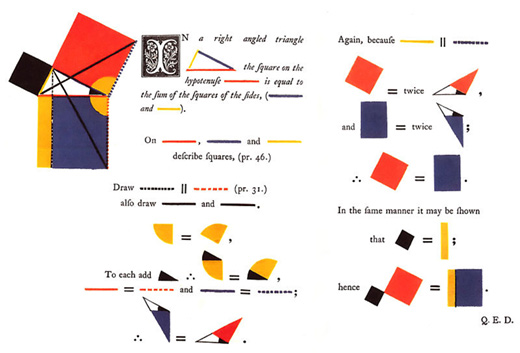
Obviously it is not accidental that the question of thinking or knowledge in images or art arises in a knowledge society, in which everything has to legitimize itself by producing “knowledge” (in contrast to being “creative,” the main legitimatory term of the 1960s, as Victor Burgin puts it). Yet this problem of legitimation seems to apply more to artists and the art world itself, and doesn’t explain the interest philosophers took in these issues. It seems to have to do more with a disenchantment of philosophy (and theory itself) with its own means and methods (as Kathrin Busch puts it, artistic research is a form of philosophical dreaming).
Disenchantment with theory
This disenchantment seems to be the product of the situation philosophy found itself in after 20 years of deconstruction had somehow “naturalized” deconstructive thought. Every bit of philosophy between at least Plato and Husserl that tried to come up with a theory of a sufficient reason, knowledge, et cetera, seemed to be theoretically flawed or ethnically undesirable. Considering these findings the obvious differences between these philosophies didn’t seem to matter anymore; the flaw already consisted in postulating the possibility of any kind of transcendental or meta-knowledge. A notion like “Un-Grund” could serve as a title of an academic conference, just as if it is a general and a priori category that everything has to comply with: there has to be no sufficient reason for anything and this can be endlessly repeated.
Dionysian utopia
The historic project of rationalism and idealism seemed to have entirely failed. As a compensation for positive knowledge and mastery of the world, now beyond reach, poststructuralism offered some vague promise of a Dionysian experience. Now something very similar to what you describe as “logic of the avant-garde,” academic work didn’t feel like the Dionysian utopia at all. Reading secondary literature, writing project applications and reports for the Deutsche Forschungsgemeinschaft, very intensely studying very obscure and esoteric texts that were very hard to understand and that very few people except oneself actually cared about; thinking about a problem that was very elusive, hard to give visible evidence of, or even to explain in common sense. Thus being disenchanted with academia, philosophers started to look for the Dionysian experience (or mystical, or else) or the “other type of thinking” that wasn’t happening in philosophy or in other realms.
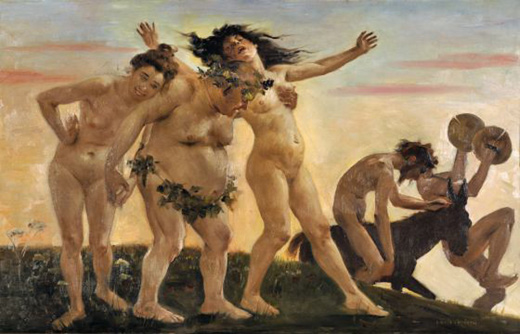
One of them was perhaps “the image” (or pictures). This at least had a tangible presence and immediacy in art and poetry, where this alternative form of thinking – the Dionysian way of being a-methodic et cetera that philosophy had to deny itself – could finally take place.
The choice: German Romanticism or German Idealism
Now all classical distinctions of knowledge in philosophy seemed to have become obsolete or indifferent (mathematical, empirical, logical, philosophical) as long as art and/or the image could be described as something in a way defiant to rationalism, some kind of paradox anti-knowledge.[1] Due to this, in my observation there is a tendency of the discourse about the “logic of the image” as well as “artistic research” to become German in a sense very specifically defined by Nietzsche in Beyond Good and Evil:
“And just as everything loves its own metaphorical likeness, so the German loves the clouds and everything associated with a lack of clarity, with becoming, with twilight, with dampness: any kind of uncertainty, shapelessness, shifting around, or developing he senses as something ‘profound.’” [2]
Obviously this is a very unfavorable representation. I think it is true for some parts of the discourse, maybe especially the weaker positions.[3] At the same time I’m still convinced that these discourses (iconic turn, artistic thinking) have intellectual merit and there is still important work to be done in these fields. My reaction to these problems was to become a rationalist and an idealist, dealing with theories from German Idealism that seem to be very outdated and flawed: Immanuel Kant’s theory of geometry and Georg Wilhelm Friedrich Hegel’s Aesthetics. These then have to be reconciled with the heritage of deconstruction that I also still find important. Some examples for the types of insights I try to get are that the idea of a thinking beyond the discursive subject-predicate-logic (a key idea of the iconic turn) was in a way already (and for the first time) achieved in Kant’s theory of mathematics. That this theory of mathematical thinking is a viable way to describe “construction” as an artistic method, as for example Theodore W. Adorno points it out as a tendency in the twentieth-century avant-garde. The idea that maybe formalized mathematical calculus is not prone to the différance, because it lacks meaning and differing contexts.
Philipp Kleinmichel
I think you have very well represented what I call the “logic of the avant-garde.” I truly believe that our common belief in the necessity and significance of art arises from a deep disenchantment within modern emancipatory and revolutionary politics. Time and again it is this disenchantment that forces us to look for other ways to create a new aesthetic of existence that would allow people to live emancipated from all kinds of repressions that we traditionally identify to be related not only with a general discontent with cultural rules and forces, but also with state apparatuses as well as with economic conditions. Yet, the history of modern art has shown that artistic practices themselves – especially if they bet on the energetic forces of aesthetics – reach limitations, not only in economic and ideological corruption, but in the resistance of humans against aesthetic effect (there is always more boredom and disappointment about the factual artistic practices than actual enlightenment and excitement).
I would also agree with you, if you say that there is a similarity of this description to your own narrative of “thinking in images,” especially if one sees it, as you suggest, in relation to its institutional contexts of the art world (artistic research) and academia (the discontent with the logos as the attempt to rationally find and describe truth). However, I think it is important to differentiate the role of disenchantment in both fields that somehow affect the belief in the role and importance of images as a non-rational possibility to relate to one’s world.
The discontent of art science
Regarding the field of art the new focus on images that was discussed as iconic turn needs to be, as I believe, differentiated as follows. On the one hand one needs to understand its implication on the field of academic art science that follows a certain discourse, tradition, and rules of evaluation; which are, of course, also open to certain changes and transformations. On the other hand, one should also acknowledge similar implications on the field of artistic production in the widest possible sense that not only includes paintings, objects, and installations, but also performances, knowledge production, and so on. In art science, the iconic turn directly refers to such attempts of theorists like Hans Belting, who tried to reevaluate their own practice in terms of freeing it from the art world’s narrow avenues and constraints. Certainly there has been a need for such an escape insofar as all scientific practices, be they art history, aesthetics, or criticism, were and are still bound to the art world’s conditions, its markets, and audiences. Since this theoretical practice is determined by an art production that has a fixed topological site, the iconic turn and therefore the announcement of the end of art history allowed these art scientists to open their practice for all kinds of concerns.
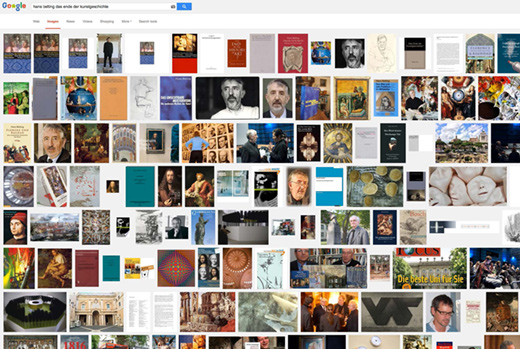
Hence, after the iconic turn we can witness a transformation regarding scientific practices. Instead of the limited interest in an artistic production that is often seen in opposition to the production of culture industry, of design, advertisement, and so on, art science could now evaluate all images disregarding of the art world’s prevailing logic. And since we are surrounded by images everywhere, one can say that not only everything becomes valuable and significant for art theory, independently from the concrete and very limited dynamics of the art world and its institutions, but that art theory becoming image theory itself becomes tremendously valuable socially and culturally. And even more so this extension and reevaluation of art science applies not only to the research within the contemporary world, but also to the forgotten worlds of the past: All image productions can be reevaluated from the perspective of image theory. It is in this way that I believe that the innovative extension of art sciences as image theory should be understood as an answer to the disenchantment with its specific limitations, with the utterly limited value, meaning and significance of art science, which – from the perspective of some art scientists and their desire to produce knowledge that matters as well as to be culturally acknowledged accordingly – is supposed to be more than a mere servant to a limited art world and industry.
New hope in the extended field: artistic research
This development of image theory replacing traditional art history and art science is of course parallel to the development of modern art production in the twentieth century that has been often described as an extended field: a field in which – after a long history of avant-gardist breakthroughs and interventions – all things, objects, and images can be understood and evaluated as art. It is precisely this openness of an aesthetic equality, as Boris Groys named it, in which potentially anything can appear as art, that, at the same time, raises the problem of justification not only in art science, but in artistic practice as well. I think that the academization of artistic practice and the so-called artistic research that is mirrored not only in increasing Master of Art degrees, as Howard Singerman has shown, but also in the recent invention of artist PhD programs, answers in a similar way to a deeper disenchantment about the extended field of art, in which its production seems increasingly either random or driven by market interests and dynamics. In both fields, I would say, these answers – whether the iconic turn in art science or artistic research in art production – lead to a series of new disenchantments about precisely these developments that one could easily discover in the ongoing discussions in both fields.
Images beyond judgment
What I find more interesting than the enfolding of the iconic turn in relation to the art world, though, is its realization in relation to the academic field of philosophy. I think that precisely your use of Kant and Hegel provides an important clue. The disenchantment about the possibilities of rational thought and the insight that there is always more than a reified rational thinking is earlier than the disenchantment in modern art as well as the reactions within postmodern philosophy. It’s no accident that Kant’s third critique carries the title “Critique of Judgment,” since it is deeply concerned with the question of how it is possible to justify judgments rationally. This concern is mirrored in his very analysis of the aesthetic judgment and what he calls “aesthetic ideas” – ideas that trigger an enormous thought process without the ability to ever come to a conclusion and conception (Begriff). From my point of view, this is of course of enormous value for the whole concept of thinking in images. In a similar way one can surely read Hegel’s insistence on the necessity to always come to a conclusion and his idea that art – as the historically meaningful symbolic and aesthetic production – has come to an end in the sense that it no longer serves to bring truth into any meaningful concept. While Kant and Hegel would of course still insist that philosophy is the realm where such a practice of rational thinking is still possible, newer postmodern theories apply their aesthetic insights to the realm of philosophy, where philosophers are supposed to understand that even the seemingly rational judgments are nothing but misunderstood effects of mediated sensual affections. Accordingly, the realm of academic philosophy is in fact opened up for image theory that is the “absolute medium” that affects our contemporary being the most (besides, perhaps, money).
Affective hypes
This leads to a few questions about your project. They are deeply concerning not only in regard to a better and reflected understanding of the attempt to replace rational thinking and the possibility of judgment through the hype about affect theories as it is explained in Gilles Deleuze’s theory and the work of people like Brian Massumi (which embraces Deleuze’s heritage) but also in regard to my new project about digital existentialism. For what does it really mean to think in images? What does it mean to replace the image with a notion, to make images the medium of thought? In a way one could surely say that even the transcendental apperception that Kant talks about and that comes a priori before any rational conscious judgment is already a rational (vernünftig) thought process – even if still unconscious, it is already a rational order of a representation of the world. And I am very doubtful to the idea that it would be possible to act just through being affected and to react accordingly without the need to translate these affects back into language, into a different kind of thought process that implies a larger – as the Deleuzians would call it, even schizophrenic – distance not only to one’s very self, but also to the things and beings that surround us. In other words, we already, always have too much rational understanding, and concepts of even the most banal things – trees, houses, cars, or computers that surround us – and I don’t think that we will be able to shorten our understanding to dissolve our subjectivities to become mere affect or desire-driven machines. They might not always be adequate; they might not always give us the absolute truth, but we have doubtlessly to deal with it as well as with the judgments we apply to them.
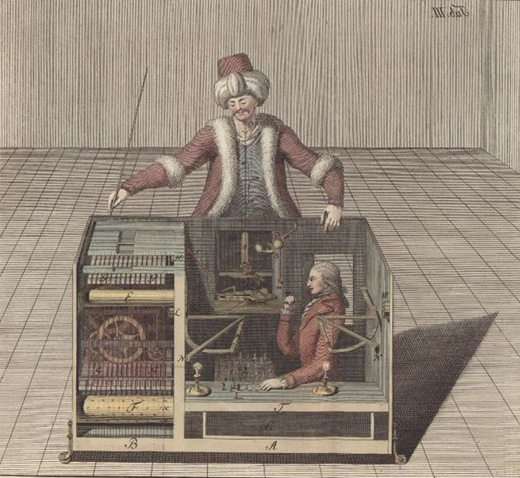
I am deeply doubtful of the vulgarized utopian idea to become animallike again and merge into an immediate vital flow of life – even if the tendency, which in the Hegelian tradition was already spelled out by people like Alexandre Kojève and Georges Bataille, seems to be obvious (the more people are embedded into an utterly aestheticized world of visual and sensual intensities that affect us constantly and, hence, driving our desires into immediate decision-making that becomes most apparent in our state as consumers, but also as participants in medial political spectacles). However, I would say that similar to Walter Benjamin’s dwarf inside the machine of “dialectic materialism,” we are able to transfer that analogy to the hype of Deleuzian “affect machines” that are also supposed to always win. “It can do this with no further ado against any opponent, so long as it employs the services of theology, which as everyone knows is small and ugly and must be kept out of sight.”[4] Thus, what I think is really relevant today, and what your project seems to attempt to realize, is to spell out an ontology of images, to differentiate between thinking about images and thinking in images, as well as to describe the relationship of affects and images, of ideas and notions and the whole relation to our complex capabilities to judgments as to its irreducible failures and shortcomings.
Martin Beck
At first I want to thank you for your additions to the background of the “iconic turn” regarding the coordinated extensions of art production and art history. This is something I haven’t done a lot of work on, and I completely agree with what you have said about that. Now I will try to use this response to give a more affirmative view of the iconic turn than in my last letter, also to be more specific about my own project, as a result of which I have a question regarding your project.
The relation between the image and the rational
What I find of course most interesting – as you say you do as well – is the relation of the image to the rational. This has to do with the fact that thinking about this relation somehow made a rationalist and an idealist, something I would never have expected five years ago. This also has to do with the meaning of the “aesthetic” and – what it maybe boils down to – the difference of an empiricist and an idealist notion of aesthetics. I want to cite a passage from your latest letter that I find key:
“While Kant and Hegel would of course still insist that philosophy is the realm where such a practice of rational thinking is still possible, newer postmodern theories apply their aesthetic insights to the realm of philosophy, where philosophers are supposed to understand that even the seemingly rational judgments are nothing but misunderstood effects of mediated sensual affections. Accordingly, the realm of academic philosophy is in fact opened up for image theory that is the ‘absolute medium’ that affects our contemporary being the most (besides, perhaps, money).”
Visual studies
I think you rightly suggest another narrative that is driving image theory; one that especially lies at the basis of visual studies as part of cultural studies. I think that the visual studies are right in analyzing the image as an irrational, irresponsible medium that can form a basis for naturalizing und reinforcing an unquestioned prejudgment about the world. For example the dialectics of the representation of gender in Laura Mulvey’s essay “Visual Pleasure and Narrative Cinema” or: the dialectics of the representation of race in W.J.T. Mitchell’s What Do Pictures Want? And it is also true, that – in the way that our society has become much more visual during the twentieth century – due to cinema, television, digitalization et cetera – this has become a much bigger concern.
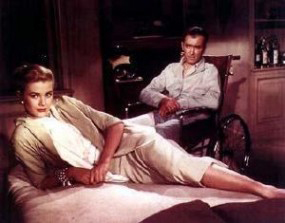
But I would also say that this is not the place for a theory of “thinking in images” that I am looking for, because in that model we as recipients of those images don’t really “think” in a meaningful way. As recipients we are – exactly as you state – only perceiving the effect of mediated sensual affections that somehow reinforce certain beliefs, that cater to our imaginations and desires. We stay receptive and passive. Also, on the other side, as cultural analysts we are not actually thinking “in” but only “about” images. Images here are the objects of study of an empirical science; that is, a combination of empirical observation and discursive argumentation. You have to observe a certain number of objects (like prewar Hollywood studio productions), look for similarities that you point out discursively in general terms, and find an explanation that establishes a correlation to some kind of social or cultural reality (prewar gender relationships).
Deleuzianism as empiricism and sophistry
Now you describe how this model is somehow also being adopted in philosophy, that we experience an “attempt to replace rational thinking and the possibility of judgment through the hype about affect theories as it is explained in Deleuze’s theory […].” And that you “don’t think that we will be able to shorten our understanding, to dissolve our subjectivities to become mere affect or desire-driven machines.” I agree with you completely on this and I don’t think that this is the way a philosophy of the image should go at all. Even more I would say that in general applying this model to philosophy (epistemology, ontology) is completely destructive and devastating.
From my newly found identity as a rationalist and idealist I would like to denounce this kind of Deleuzianism (not sure if everything Deleuze wrote falls into this category) as a mixture of sophistry and empiricism that is actually the enemy of philosophy itself. This is maybe not so untrue (also as a self-description), because from my reading of Deleuze himself (that is very long ago) I remember him both embracing the position of the sophist (as the phantasma in Plato’s Sophistes) and of the empiricist (especially in his book on David Hume). I also remember from the preface to his book about Kant, that Kant is an “enemy” for him.
As we know, empiricism is the position that denies the existence of any intellectual or transcendental structures of our experience and tries to ground our whole belief structure in perceptions and affects. As we see very well with Hume, this approach, taken to its radical ends, leads to skepticism and in Hume’s works you can see, how he becomes more and more desperate about that (the “unhappy consciousness” that wants to have a world but realizes it can’t have one, which Hegel describes in the Phenomenology of Spirit). This seems entirely due to the fact that Hume has no theory of what Kant considers the forms of intuition and understanding. These are intelligible structures that govern perception and are not themselves derived from perception; they are part of our spontaneity as social, rational beings.
Another thing about empiricism is that it often compensates for this lack in explaining our rational faculties by introducing a dogmatic ontology: with Hume, and even more the logical empiricists like Rudolf Carnap and Willard Van Orman Quine, this is physicalism; the belief that only the objects and relations described by physics and natural science are “real” in an ontological sense. I would suspect that this role of a stabilizing dogmatic worldview in Deleuzianism is filled by theories of the spectacle and spectacular capitalism that you also briefly refer to. For classical and twentieth-century empiricism there is an explanation gap between sensualist epistemology and physicalist ontology – it is hard to see how the weak subject can come up with a reasonable explanation for that strong ontology. I always felt a similar explanation gap between the politics of embracing the affect, “becoming animal” (or “minoritarian” et cetera) and any impact of this action in the world that ontologically has been construed as spectacle (which also may be the point of the notion of an all-absorbing spectacular logic). Any reasonable link is just missing (which also may be the point). Not seeing a problem in that gap, but dealing with it affirmatively, is sophistry: deserting rationality, or presenting a philosophical argument in bad faith.
My position: Anschauung (intuition) and idealist aesthetics
In the light of this, my position of the link between the image and the rational is the following:
The point would not be to show how the rational is based in the aesthetic that is framed along the empiricist notion: based on the sensual, the percept, and the affect (the idea of dissolving everything in the empirical and the sensual). Instead my project starts with an idealist notion of the aesthetic that maybe already appears in Alexander Gottlieb Baumgarten’s distinction between the “sensual” and the “sensitive,” and that reappears in Kant’s theory of the transcendental idealism of space and time, and again in Hegel’s aesthetics, and in a way in some twentieth-century positions as well. The point would be that there is an intelligible structure of the sensual that is not derived from perception and at the same time is not following the structure of discursive logic (as the logic of predicates, judgments, and syllogism). This is exactly what the term Anschauung (intuition) as opposed to Empfindung (sensation) and Wahrnehmung (perception) stands for in the theories of Kant and Hegel. Intuition here has nothing to do with introspection, inspiration, or mysticism, but is the name for a spontaneity we have in regard to our sensual faculties, a priori faculties of construction and expression, which are not bound to the logic of language and predication.
Technical thinking in images
Kant’s theory of the forms of intuition is the first coherent theory that – going beyond Platonism and substance ontology – describes how it is possible that we as embodied subjects can identify embodied objects and share a common spatio-temporal knowledge of them, by controlled changes in perspective. The basic operations of moving our body in space, going forward and rotating around our body axis, are mirrored by the basic operations of Euclidean geometry, drawing a line and a circle. With the help of the diagrammatic schemata of geometry and our ability to construct quantitative spatial relations wherever we want (even in our imagination), we generate a technical form of knowledge about what is feasible and what is absolutely impossible in regard to our experience of space: for example that it is not possible to draw a line between two points that is shorter than the straight line (basically because it is not possible to construct a triangle where two sides together are shorter than the third).
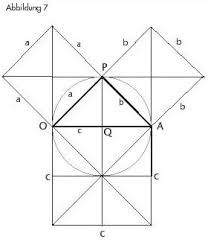
Poetic thinking in images
As we all know, Kantian philosophy leaves behind a huge problem: The dualistic ontology Kant has successfully overcome in the theoretical realm reappears as a gap between our nature as moral, supersensual beings and our nature as embodied, sensual beings. In the Critique of Practical Reason there is no way to show how one of them relates to the other. One of the key projects of post-Kantian idealism – in Hegel’s aesthetics appearing as the problem of the “absolute” – is to bridge these two, starting from Kant’s own attempts in the Critique of Judgment that you have also mentioned. To solve this problem – how we can get a coherent form of self-consciousness or a knowledge of our double nature as supersensual and sensual beings – the human body is, for Hegel, again a key model. Acting with our bodies we have a way of conveying our practical interests in a way that is intelligible to ourselves and each other in a fashion that is both an aesthetic (not discursive) and a spontaneous faculty in a way that we don’t have to do empirical observations and then draw conclusions to understand it. Images – for Hegel, artworks in general – can participate in this logic of expression or the “shining of the inner in the outer,” presenting a certain contemporary “knowledge” or “truth” about these relations that I call “poetic” and that are analogous to philosophical knowledge.
Image theory and critique of rationality –e nergetic thinking in images
Now as you also said, Kant and Hegel most certainly don’t have the last word about rationality in the history of philosophy, and my approach is to take account of that in a model I call “energetic” (maybe this is a bad name), where I try to deal with twentieth-century image theories and their obvious alliance with the twentieth-century criticism of metaphysics and its insight in the limitations of rational thought. Now this could theoretically be the place for an image theory that is based on affects, desires, and manipulation – basically the approach of visual studies or a possible Deleuzian aesthetics in the aforementioned and very vulgar sense. Then the “rationality of the image” would be its irrationality in the sense of being empirical, contingent, mere opinion, manipulative force, et cetera. This would then also be part of an inclination of present debate of images to the irrationality of “deep feeling” that I already criticized in my first letter.
I would suggest another path, starting again with this idea of a non-empirical sensual or, as Hegel puts it: a “non-sensual sensual” of intuition, that involves the notion of an a priori spontaneity. The alliance of critique of rationalism and image theory would play out in the somewhat paradox notion of a spontaneity of the object, as for example in Horst Bredekamp’s Theory of the Image Act which, bewilderingly, isn’t a theory of “How to do things with images” along the speech-act theory of J.L. Austin, but a theory of how images themselves act. Dieter Mersch’s work was and is also key for that question, how something like différance described by Derrida, can be aestheticized, or can “show itself.” To contrast this with a Hegelian-type theory of the intelligibility of the body, one could cite Emmanuel Lévinas and his notion of the Antlitz (face), that has also been linked to the eastern image tradition of icons where a central notion is that it is not us who are looking at the icon, but the icon is looking at us. And one could cite Adornos meta-critique of Hegel’s critique of natural beauty where he states that the “non-identical” is leaving a trace in natural beauty and art is mirroring this model.
Two faces of postmodernity
Something I so far got from our discussions and the attempt to sharpen my position in light of your questions, is a higher awareness for the different meanings of the “postmodern” that we have to take into account while dealing with the twentieth century’s legacy. One post-modernity that could be associated with cultural studies and that has taken a huge interest in the classical cliché trio (Paul de Man) of Nietzsche, Karl Marx, Sigmund Freud, as well as Deleuze and others to show the contingencies in culture to criticize ideological or intellectualist worldviews. Another postmodernity would be associated with authors like Derrida, who are generally more interested in dealing with the philosophical tradition than with the analysis of culture. This deconstructivist view is – rather than just criticizing ideology or intellectualism – more interested in the problem of the rational itself. In a way this “closing” the epoch of metaphysics consists more in spelling out the paradoxes in which the rational always seems to end up at some point, while at the same time somehow staying true to the project of philosophy and rationality. For example: As I remember there is an interview with Derrida where he – as much as he criticizes Husserl – states that, still, most philosophical problems can be solved through transcendental phenomenology.
Further questions
My first question for you is, if you agree with this image of a twofold postmodernity, how that would relate to your project about digital existentialism. To recall: you are following the hypothesis that postmodern rhetoric about the end of man and the end of the rational is an exaggerated and maybe defensive reaction of bourgeois intellectuals to the decline of their own class. This decline is due to the rise of the “digital” as something that completely reshapes the relation of our cognitive and bodily faculties to the world. Another way to frame this question: Would you say that the events regarding the rise of the digital and postmodernist discourse are taking place in cultural history or are these events taking place in the history of metaphysics that Heidegger calls Seinsgeschichte (history of being)?
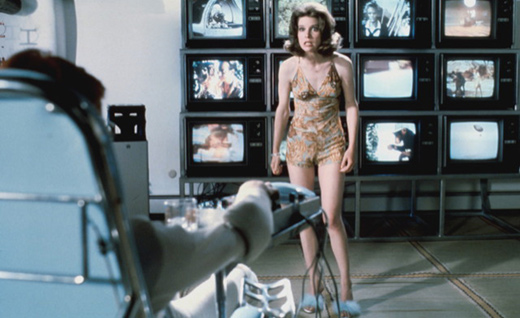
My second question is regarding my own work in light of yours. Would or could the functions I try to describe as nondiscursive, aesthetic ways of spontaneity (and the related image-practices) be part of a digital existentialism? How would they be transformed?
I haven’t worked on the digital and I realize that the models I’m looking at were all established before the rise of the digital as a world-shaping force. My model of “intuition” basically rests on something along the lines of Michael Tomasello’s “shared attention” – a common social sphere where we can share attention on a present and perceivable object (physical objects, signs, images, our own bodies). This common sphere of perception and interaction has been key to the development of culture and society since the cavemen and will – as it seems – never go away completely (at least I can’t imagine how). Yet in the digital this structure is superimposed by one where all these notions (the social, attention, presence, perception, interaction, identifiable object) are significantly transformed. For example, there seems to be no geometry of movement in the Internet. Can we maybe still describe something like a priori forms of intuition? What would they look like? And is the digital in a way too “technical” so that it eliminates all possibilities for différance or the
“non-identical” to show itself (the impossible possibility of the “event”)?
[1] Another problem was that most present art that uses labels like “artistic research,” “art and science” to describe itself is completely boring and tedious. One talks just about the art one likes anyway, and any feature of it can now be called “thinking.”
[2] Friedrich Nietzsche: Beyond Good and Evil, Part VIII, London 2001, p. 242.
[3] Most certainly the recent shift to a new dogmatism or speculative realism is also a reaction to this kind of thought.
[4] Walter Benjamin: On the Concept of History (1949), https://www.marxists.org/reference/archive/benjamin/1940/history.htm
